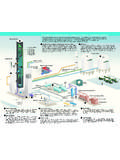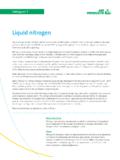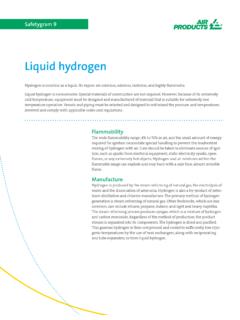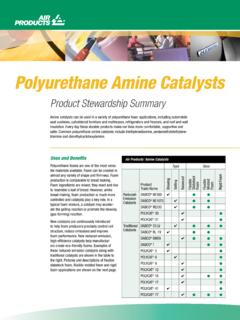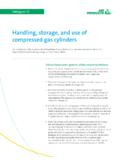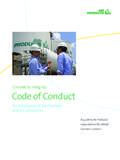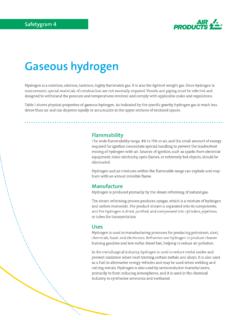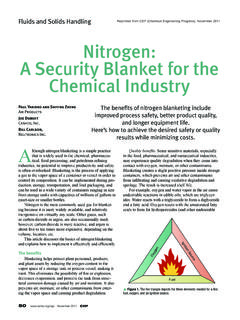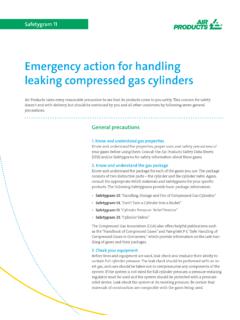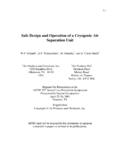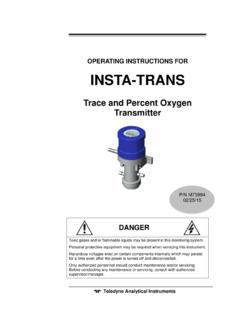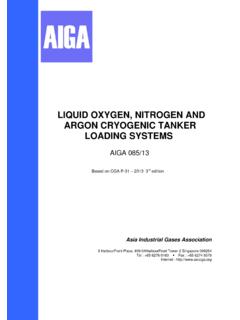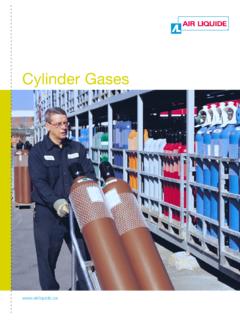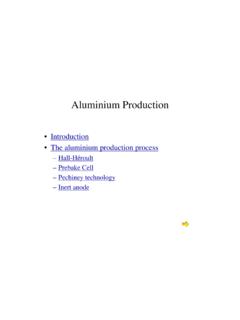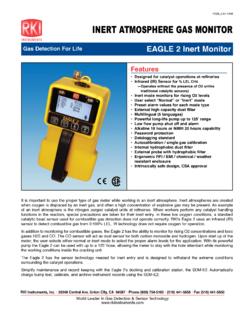Transcription of recognising and addressing the hazards of oxygen …
1 Issue twenty one 2009 > Glass Worldwide Reprinted with permission from Glass Worldwide > coMBUStIonoxygen safety in glass manufacturing facilities is an important topic for reasons such as the lack of familiarity with the product; due to the need to improve operations, new uses of industrial grade oxygen have been implemented in melting operations at many glass plants. Emissions requirements have recently become a strong economic driver for this acceptance in use. Another reason is too much familiarity: at most sites, oxygen has been in use for decades in welding and other operations so complacency becomes the issue that can lead to preventable is a reactive element that is found in water, in most rocks and minerals and in numerous organic compounds.
2 It is a diatomic gas constituting 21 per cent of our atmosphere and is capable of combining with all elements except the inert gases. It is active in physiological processes and is a key component required for combustion. Most people who use pure oxygen are aware of the hazards of and special precautions for handling this material, but fewer are aware that these hazards extend to oxygen mixtures. Therefore, it is helpful to review the classification of the various mixtures of oxygen , the hazards of pure oxygen and oxygen mixtures and how to safely handle these products.
3 oxygen mixture classificatiOnsThe following information is based upon US Compressed Gas Association (CGA) and ASTM International documentation, but the principles are repeated in other documents from the European Industrial Gas Association (EIGA) and the International Standards Organization (ISO). The CGA defines oxygen -enriched mixtures or atmospheres as any mixture or atmosphere containing greater than 23% oxygen , since above this concentration, the reactivity of oxygen significantly increases the risk of ignition and fire.
4 Materials that may not burn in normal air may burn vigorously in an oxygen -rich environment. The CGA breaks oxygen and its mixtures into four recognising and addressing the hazards of oxygen enrichmentRoBeRt MaRtRIch, JoSeph SlUSSeR and KevIn lIevRe offeR SoMe advIce to GlaSS IndUStRy peRSonnel aBoUt the Safe handlInG of oxygen distinct classifications:g Mixtures containing less than 5% oxygen in an inert: These mixtures are packaged and labelled in the same manner as inert gases such as nitrogen and argon. For packaged gases they use the same 580 valve connections and are labelled with a non-flammable gas hazard diamond.
5 These mixtures are considered Mixtures in the range 5 to 23% oxygen : These mixtures carry the same non-flammable gas hazard diamond as inerts, but are packaged with a 590 valve connection intended to differentiate these mixtures from the inerts as they will support combustion but not enhance the danger of ignition beyond that of normal Mixtures containing greater than 23% oxygen : These mixtures must be handled with all the precautions and care of pure oxygen as they start to change fire chemistry and enhance combustion.
6 They carry an oxidiser hazard diamond in addition to the non-flammable gas diamond, and packaged gases are equipped with a 296 valve connection to distinguish them from the less reactive mixtures of oxygen . These mixtures may be ppm level components in otherwise pure oxygen , for example, 8 ppm methane in Pure oxygen : In the packaged gases, this material has its own dedicated 540 valve connection and an oxidiser hazard oxIdISeR WaRnInG SyMBolThere are other valve connection standards that may not distinguish between the various concentrations of oxygen , so labels must be relied upon to identify these mixtures because they may not be protected from Of oxygen and mixturesOxygen and its mixtures are packaged as compressed gases and are supplied at pressures up to 4500 psig (300 bar).
7 If this pressure is released in an uncontrolled manner, the resulting energy release can cause great damage or injury. This could occur if a cylinder is being handled without a protective valve cap and is dropped.>fIGURe 1technoloGy > coMBUStIon34 Reprinted with permission from Glass Worldwide Worldwide > issue twenty one 2009 For more information on the proper handling of compressed gas cylinders refer to Air Product s Safetygram-10 Handling, Storage and Use of Compressed Gas Cylinders . For more information on the consequence of shearing a cylinder valve, refer to Air Product s Safetygram-14 Don t Turn a Cylinder Into a Rocket.
8 Oxidisers carry additional hazards and to fully understand them, we must first understand some of the terms used:g Adiabatic heat: A process in which there is no gain of heat to or from the system. For the purpose of this article, it is the heat picked up by the gaseous oxygen from the rapid pressurisation of a Auto-ignition temperature: The lowest temperature required to ignite or cause self-sustained combustion in the presence of air and in the absence of a flame or Flammable range: The range of concentration in volume per cent of flammable gas or vapour between the upper and lower flammability Kindling chain.
9 The promotion of ignition from materials of low ignition temperatures to materials of higher ignition Limiting oxygen concentration: The minimum oxygen concentration in volume per cent (at a given temperature) in a gaseous mixture containing a fuel below which a flame will not Lower flammability limit: The minimum fuel mixture in volume per cent with air through which a flame will just Upper flammability limit: The maximum fuel mixture in volume per cent with air at which a flame will just oxygen concentrations exceed 23%, oxygen enrichment begins and fire chemistry starts to change.
10 Materials become easier to ignite, including the materials of construction used in oxidiser systems, such as reactivity continues to increase with the concentration of oxygen , pressure and / or temperature, so oxygen contacting a material at 2000 psig is more likely to react with the material than at atmospheric pressure. In the case of a contaminant in a system, the contaminant may react and generate enough heat to start another material reacting. When temperature increases it can lower the amount of energy required to initiate a reaction.
